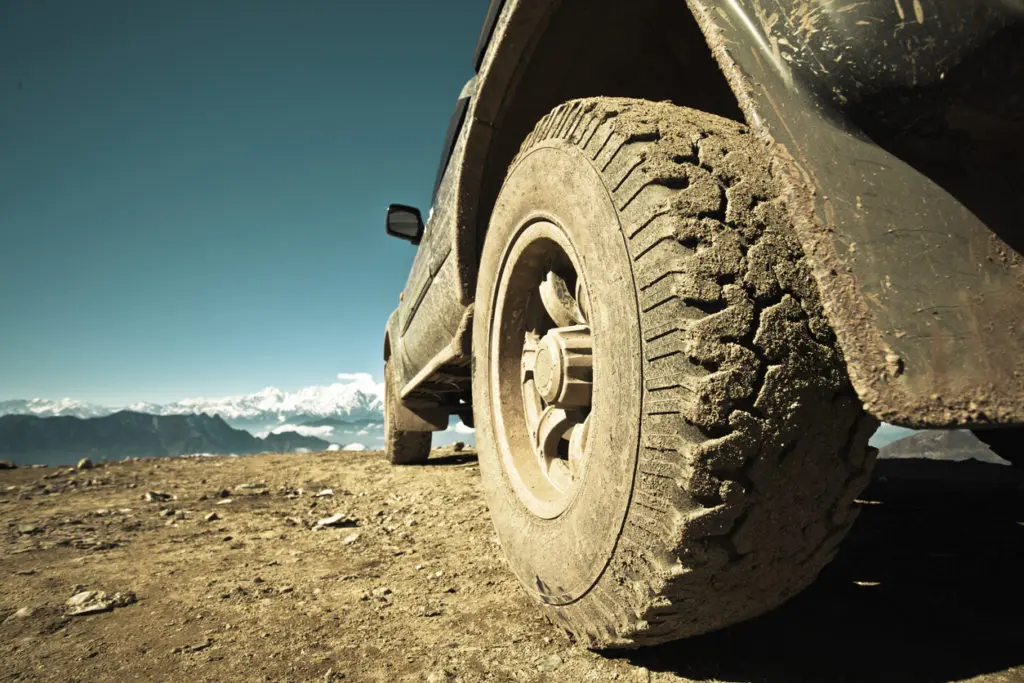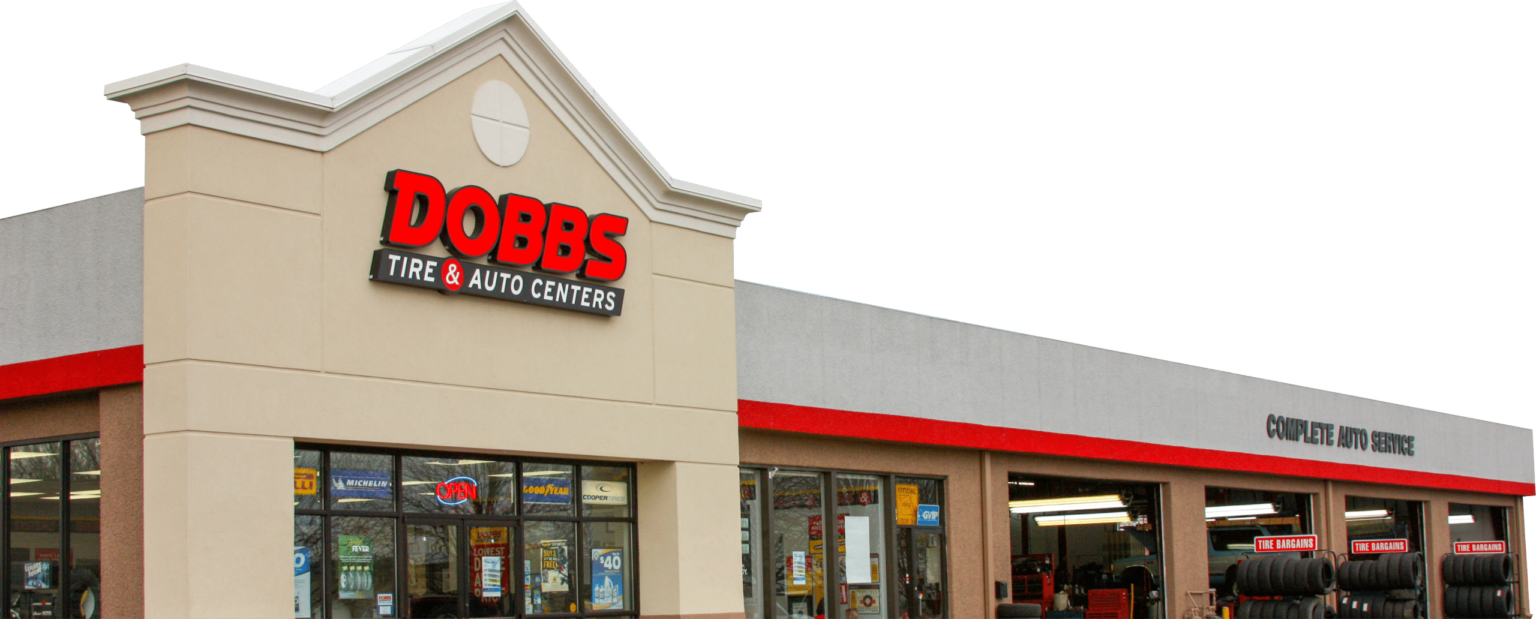4×4, AWD, 4WD – How Do They Work?
You’ve probably seen the emblems or stickers on many different vehicles: AWD, 4×4, 4WD, etc. Then, of course, there are the manufacturer tags, such as xDrive, Quattro, All-Weather Drive, or All4, but these basically mean the same thing, usually AWD. What exactly do these tags mean, though, and why are automakers intent on you knowing their vehicles offer them? First, let’s talk about what AWD, 4×4, and 4WD are, how they work, and how they differ.
Most vehicles on the road are 2WD (two-wheel drive), either FWD or RWD (front-wheel drive or rear-wheel drive), meaning the engine transmits torque to the transmission, and the transmission transmits that torque to either the front wheels or rear wheels. Interestingly, some RWD trucks choose to differentiate themselves from the pack with a “4×2” tag, meaning four wheels on the ground, two of them powered. On the other hand, about 40% of vehicles in MO are 4×4, AWD, or 4WD, that is, vehicles that can provide torque to all four wheels.
The tag “AWD” stands for All-Wheel Drive, “4WD” stands for Four-Wheel Drive, and “4×4” means four wheels on the ground and four wheels driven – there are even 6×4 and 6×6 vehicles out there! The terms aren’t always interchangeable, but it’s also a debate that’s been going on for decades. Generally, a vehicle with the 4WD tag simply means that it can power all four wheels, which means that 4×4 and AWD vehicles might also be referred to as 4WD. Usually, the 4WD and 4×4 tags are reserved for vehicles with the ability to power just two or all four wheels, while AWD is usually reserved for vehicles that power all four wheels all the time, but not necessarily.
4WD – Four-Wheel Drive
This is where it all started, really, when automakers realized that more traction was needed in certain situations. Under normal circumstances, a 4WD vehicle would run in either FWD or RWD mode, transmission torque transmitted to just one axle. When extra traction was needed, such as in slippery situations or off-road, the transfer case was engaged by a lever – newer versions use buttons and knobs for the same effect – to drive the other axle.
4WD vehicles have a transfer case connected to the transmission, which splits torque output to the front and rear differentials. The differentials may be open, limited-slip, or locking, depending on the model. The transfer case delivers a 50/50 torque split to the front and rear axles, meaning they drive the same speed.
4×4 – Four Wheels Driven
Take a look at vehicles meant for off-roading, however, and you’ll see the 4×4 tag, usually in bold letters or looking like they splashed it on the side of the truck or SUV. It’s a 4WD, to be sure, but automakers like to use the 4×4 tag to signify that it’s meant for off-roading. If you see 4WD or 4×4, it’s a safe bet that they both have the same type of system putting power to the ground.
AWD – All-Wheel Drive
All-wheel drive systems differentiate themselves by providing power to all four wheels either all the time or automatically. Like 4WD and 4×4 systems, there are a transfer case and front and rear differentials. Unlike traditional 4WD and 4×4 systems, however, the transfer case on AWD vehicles usually has a center differential as well. A differential allows for varying torque distribution and speeds. In the front and rear axles, the differential allows for different wheel speeds, comparing left to right, when turning. In an AWD vehicle, the center differential is critical, because it allows for different wheel speeds, front to rear, when turning.
In addition to the always-on 4WD system, some AWD vehicles may also include options for locking up either the front, rear, or center differentials, depending on traction requirements. These may be automatic, based on wheel slip, or manual, based on driver demand.
Some automakers have produced vehicles with the AWD tag that don’t quite fit this definition, such as the Lexus RX400h or RX450h, or the Acura SH-AWD system. The Lexus hybrid is primarily a FWD vehicle but, with the addition of an electric motor powering the rear axle, can provide AWD function when performance or traction demands it. There’s no mechanical connection between the front and rear axles. The Acura SH-AWD system and others use electric motors to force torque to a particular axle or wheel. In sporting applications, for example, such a system applies more power to the outside wheel of a turn to power through the turn, resulting in a more dynamic driving experience.
What AWD, 4×4, and 4WD Can and Can’t Do
While it’s true that AWD and 4WD systems can improve traction in some situations, they cannot overcome the laws of physics. In this case we’re talking specifically about acceleration, braking, and momentum versus available traction. On warm and dry pavement, your tires have the best traction, and it stands to reason that cold and wet pavement or snow reduces traction, which most drivers consider the call to slow down.
Unfortunately, given snow tires and an AWD or 4×4 drivetrain, some drivers forget about traction altogether and forget a very basic rule: The laws of physics still apply! Basically, AWD and 4WD systems are only useful at low speeds. With four wheels powered, the chances of getting out of a slippery situation are pretty good. At high speeds, around corners, or when coming to a stop, the system doesn’t do much of anything to help you. When you step on the brakes, it’s not the AWD system slowing you down, but the brake system. In other words, if you hit a slippery spot that exceeds the traction of the tires, you’re going into the snowbank, or worse.
Dobbs Tire & Auto Centers is Here to Help
Whether you’re driving RWD, FWD, AWD, or 4×4, Dobbs Tire & Auto Centers has the tools needed to keep them on the road. Not sure if you need maintenance or you’re experiencing unusual noises or vibrations? A Dobbs’ ASE Certified drivetrain technician can maintain, inspect, diagnose, and repair your drivetrain and get it back to 100% function. With 45 locations in the St. Louis, MO, region, there’s bound to be one convenient to your work, home, or school. Why not give us a call and see how we can serve you?

